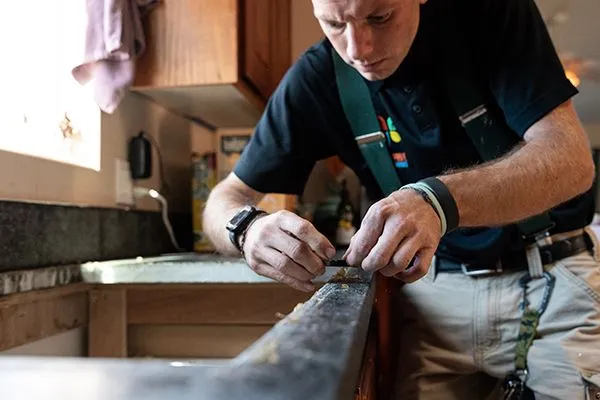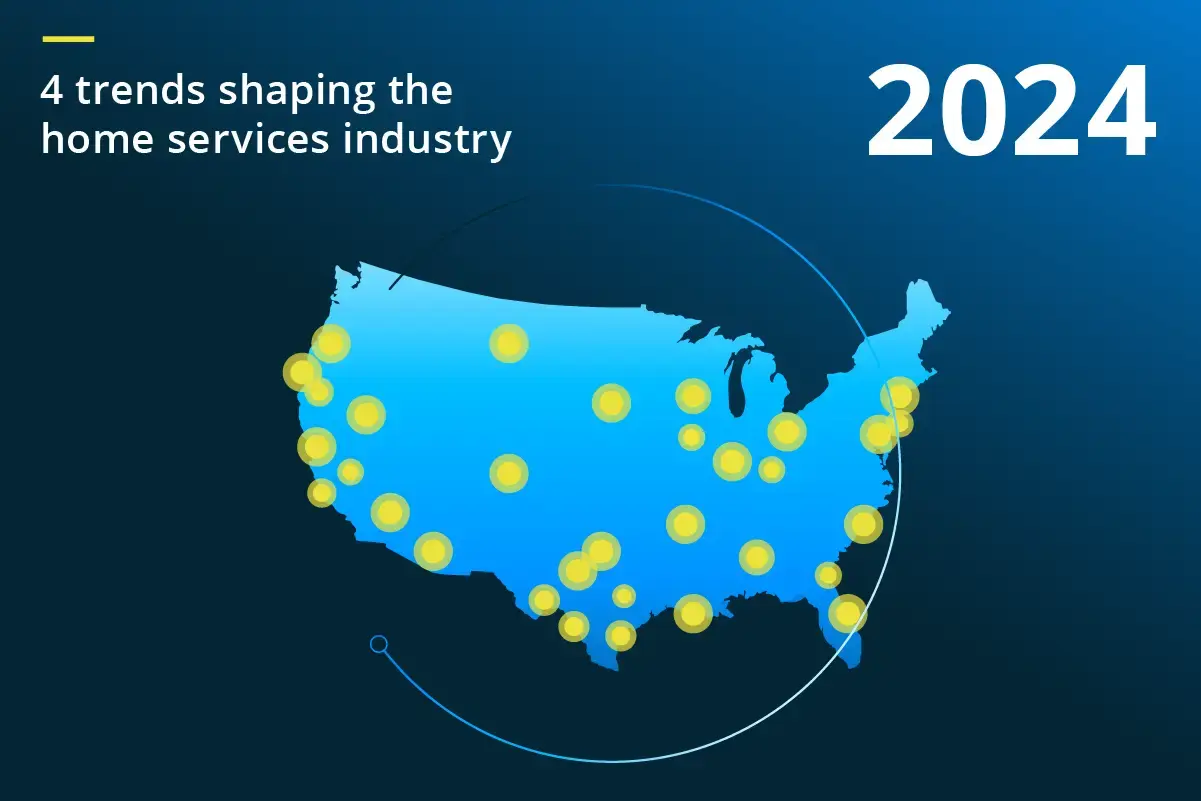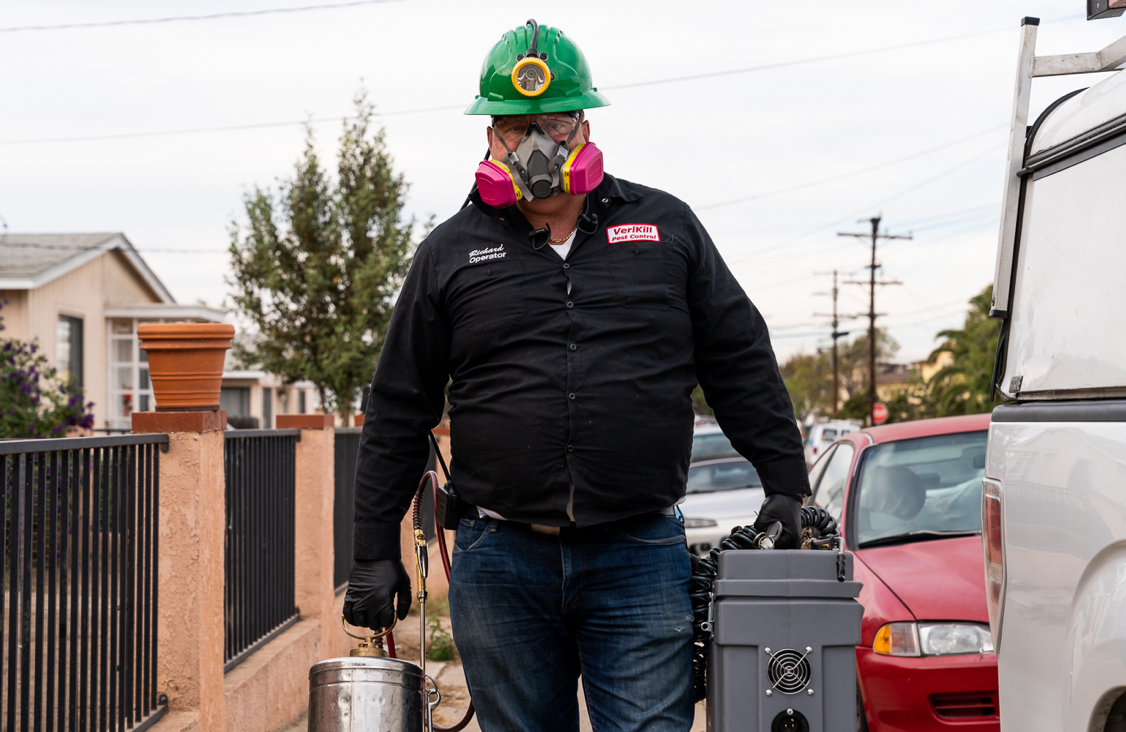
Direct mail marketing like HVAC postcards delivered to your customers’ door might seem a bit old school – and it is – but there’s a reason this method has stuck around for so long.
By sending postcards in the mail to existing and potential customers, you can grab their attention in unique ways that other mediums can’t which is exactly why we included this feature in our HVAC software.
We’ve seen our HVAC pros use postcards with great success, so we’re sharing useful strategies and examples to help you get in touch with new and existing customers in a way that stands out and brings in new work. In this guide, you’ll find:
- The Pros and Cons of Direct Mail
- HVAC Postcard Strategies
- Examples of HVAC Postcards
- How to Add Postcards to Your Existing Marketing Strategy
The pros and cons of direct mail
More than any other advertising technique, direct mail puts your information squarely in the hands of the consumer, at the very place they’ll need your services — their home. Plus, it has relatively low costs compared to other advertising.
Sending HVAC marketing postcards allows you to:
Get Noticed: A recent Canada Post study found that more people notice and read direct mail (53%) than email messages (26%). A promotional email might end up in someone’s junk folder or get deleted before they even open it. Alternatively, with physical mail, the recipient must collect and sort each item by hand.
Build Brand Awareness: The same Canada Post study found that people are ten percent more likely to remember your business if you combine direct mail and digital messages. How many times have you received a coupon or promo code in the mail and stuck it on your fridge? So even if a homeowner doesn’t call you right away, you’ve still made a lasting impression.
Drum Up Repeat Business: HVAC postcards aren’t just something you should send to potential customers. By sending postcards directly to your existing customer base, you can encourage them to call you for seasonal maintenance.
Building Stronger Customer Relationship: Postcard marketing can also help businesses build a stronger customer relationship. Even if the postcard is not promotional, it would still be helpful to send your customer a thank you note or to remind them for another service in the future.
The drawbacks of marketing postcards might include:
Higher Cost than Email Marketing: You don’t need to spend a ton to run an HVAC postcard marketing campaign, but there are a few extra costs involved. Namely, you need to design and print your cards and pay for postage.
Tracking Results Can Be Tricky: You need to get creative about how you track the impact of your HVAC postcards. Whereas email marketing allows you to see how many people receive, open, and click on links within your message, tracking with direct mail is a bit more complicated.
However, you can combat this by including unique promotional codes that are associated with a specific postcard campaign. So, when someone calls and says they received a discount code in the mail, you’ll know exactly which postcard they’re talking about – which means you’ll know which pieces generate the most leads.
HVAC postcard strategies
On average, direct mail campaigns have a return rate between .5% to 2%. So, if you send out 100 postcards to local homeowners, you should get a response from up to two people. To maximize your potential return on investment (ROI), follow these tips for creating impactful HVAC postcards.
1. Know Your Target Market
Unlike many digital ads, direct mail allows you to be more specific about who you target. So, when building your mailing list, it’s important to only include people in your ideal customer demographic (folks who are most likely to be your customers).
You should also consider creating more than one list so that you can target different homeowners with different offers. As an example, you might create separate lists for existing customers, new local housing developments, and homeowners in older neighborhoods who might need more in-depth services now or in the near future.
Your starting point for any direct mail efforts should be your current client list. They’re already a fan of your work, but might need reminders or inspiration to set new appointments.
If you’ve acquired additional names and addresses through past marketing efforts (even if they’ve yet to use your company) add them to your first phase of mailings as well.
From there, conduct research on additional areas you want to target. Aside from your general service area, look for:
- Neighborhoods where you’ve already performed service.
- Adjacent housing where you have yet to acquire any clients.
- Townhome or condo communities where homeowners are responsible for their own heating and air conditioning needs.
- Older single-family subdivisions where equipment is aging or close to needing replacement.
To get the most out of your direct mail investment and to save money, avoid the following:
- Apartment communities with in-house maintenance.
- Townhome or condo communities that have dedicated repair techs or are overseen by an HOA (you’ll need to make a more personal appeal to get on a preferred vendor list).
- Neighborhoods that include brand new construction where HVAC service might be rare for the first couple of years.
If you fall short with a useful list of addresses on your own, no problem. Figure out your geographic targets and purchase a mailing list from a direct mail broker.
2. Don’t Skimp on Materials
First impressions matter. When trying to sell your business to a consumer, show them you care about quality and attention to detail.
Personalize your materials so that your pitch comes across as a direct appeal and not a mass mailing. Of course, a receipt knows what they’re getting in a postcard mailer, but they’ll appreciate the personalized address over the lazy “Current Homeowner” heading.
Use only high-quality materials (for example, glossy postcards that don’t easily tear) and review all of the copy for spelling and grammatical errors. If using images, ensure they are vibrant and support the overall theme you’re promoting.
Finally, don’t neglect the quality of your message. Just as vital as stunning images and error-free copy, a pitch that is uncomplicated and valuable to the reader will garner more responses than those that are a jumbled mess.
Hire freelancers and designers if necessary to get the best look possible. There’s also plenty of third-party firms who will handle the whole process for your – from initial idea to the final mail out.
3. Offer Specials
Consider free inspections, a coupon for discounted repairs, special pricing on new components, or promotions specific to your firm that appeal to your target homeowner.
You can create urgency by making the offer time-sensitive. For example, “Schedule service before June 1 to get our 15% discount.” Alternatively, you might graduate the incentive, “15% off before June 1, 5% off between June 1 and June 30.”
Regardless of the incentive, make it attractive, and something that a homeowner will want to take action on as soon as possible.
4. Include a Clear Call-to-Action
To avoid information overload, focus on one promotion per postcard. Whether your goal is to drive people to visit your website, generate referrals, or simply build brand awareness, include a clear call-to-action to make it happen.
The best CTAs follow a few simple rules:
- Don’t bury the lead. Make your CTA clear and attention-grabbing.
- Make the CTA easy to understand, and limit it to a single task.
- Add value to the CTA. You might offer a 15% discount if they schedule an appointment by June 1 but toss in free filters or an extra service if they set it before April 15.
You can use your direct mail postcard as a prompt to get the consumer to take the next step in engaging with your company:
- Call or email to schedule an appointment.
- Visit our website (or a specific landing page made exclusively for the campaign).
- Contact a sales rep to discuss service needs.
Don’t just remind them that service is necessary, direct them to take action immediately.
5. Get the Timing Right
Not sure when should you send out your HVAC postcards? The ideal timing for your campaign depends on your strategy.
When targeting existing customers, for example, you could send out bi-annual postcards reminding them of the importance of seasonal maintenance.
We recommend trying out your first campaign in late spring. Homeowners often have a thousand other things on their mind during the early part of the year. It’s up to you to remind them that the cooling of their home is one of the most important.
Planning ahead not only helps homeowners avert potential AC problems when the days get scorching hot, but it also gives your operations a boost.
6. Remove Addresses from Your Mailing List
If any of your postcards fail to deliver and are returned to you, that’s a sign you should clean up your mailing list. Remove old contacts from your list to avoid wasting future postcards (and postage) on outdated addresses.
7. Track Your Results
Add a unique tracking number or promotional code to each run of postcards. This helps you determine which postcards are most effective at bringing in new customers. You can use this knowledge to make improvements and test different designs and messaging until you find the winning combination.
HVAC Postcard Examples
We’ve already covered the elements to include and how to make your mailers pop, but how about some examples?
Below are a few Housecall Pro postcards to provide you inspiration for a successful summertime direct mail campaign. Just right click and save as any of these images below to use as your next HVAC postcard design.
▼ Holiday postcards are perfect for special holiday promotions
▼ Seasonal postcards that encourage seasonal maintenance
Tips to maximize your marketing efforts
Tie your direct mail into other marketing efforts through the following:
- Present a consolidated and consistent brand across all of your platforms. Your HVAC brand is easier to distinguish when unified and will help sell you as a highly professional service.
- Send the same promotions via email and postcards.
- Add a QR code to the postcard to get mobile users directly to your online pages where they can find more info or book an appointment.
The Importance of Following Up
You also want to stay connected with clients after service. Follow-up mailers are just as important as the lead-generating postcards.
Housecall Pro can help extend your direct mail campaigns by automating postcard follow-ups, reinforcing your commitment to the client after a job is complete.
Items like additional mailers are useful for techs to deliver between jobs. Regular mail or email newsletters for current customers are great as both a “Thank for being a valued client,” and providing tips for how to save money by managing their heating and cooling needs throughout the year.
Finally, don’t forget secondary mailers or leave behind postcards that promote a referral program for current customers. Be sure to incentivize the offer to generate as much referral business as possible.
We Can Help
Housecall Pro users can enjoy seasonal postcard templates that can be sent out to customers through automated postcard marketing.














